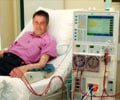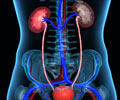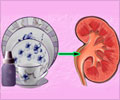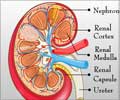
2. Modifying Blood Access Reduces Kidney Disease Patients' Risk of Hospitalization
Patients Benefit by Switching from Catheters to Arteriovenous Access
For kidney disease patients who must undergo dialysis, experts recommend an arteriovenous blood access, preferably a fistula which is created by connecting a vein and an artery to form a long-lasting site through which blood can be removed and returned. Many patients become complacent with using a catheter instead—even though catheters are associated with increased infections, complications, and deaths—because they do not require advanced surgery and attachment to the dialysis machine does not require needles. A new study shows that patients who convert from catheters to arteriovenous access have a lower risk of being hospitalized for any reason. Eduardo Lacson Jr., MD (Fresenius Medical Care, North America) and his colleagues studied the health of 70,852 dialysis patients, 19,792 of whom had catheters. Over a 4-month period, 10.3% of these converted to arteriovenous access. Compared with patients who kept their catheters, patients who converted had a similarly lower risk (by about 30%) of being hospitalized within one year as patients who were dialyzing with arteriovenous accesses during the entire study period, while patients with arteriovenous access who switched to catheters were 22% more likely to be hospitalized. The article, entitled "Change in Vascular Access and Hospitalization Risk in Long-Term Hemodialysis Patients," will appear online at http://jasn.asnjournals.org/ on September 30, 2010, doi 10.2215/CJN.08961209.
Source-Eurekalert












